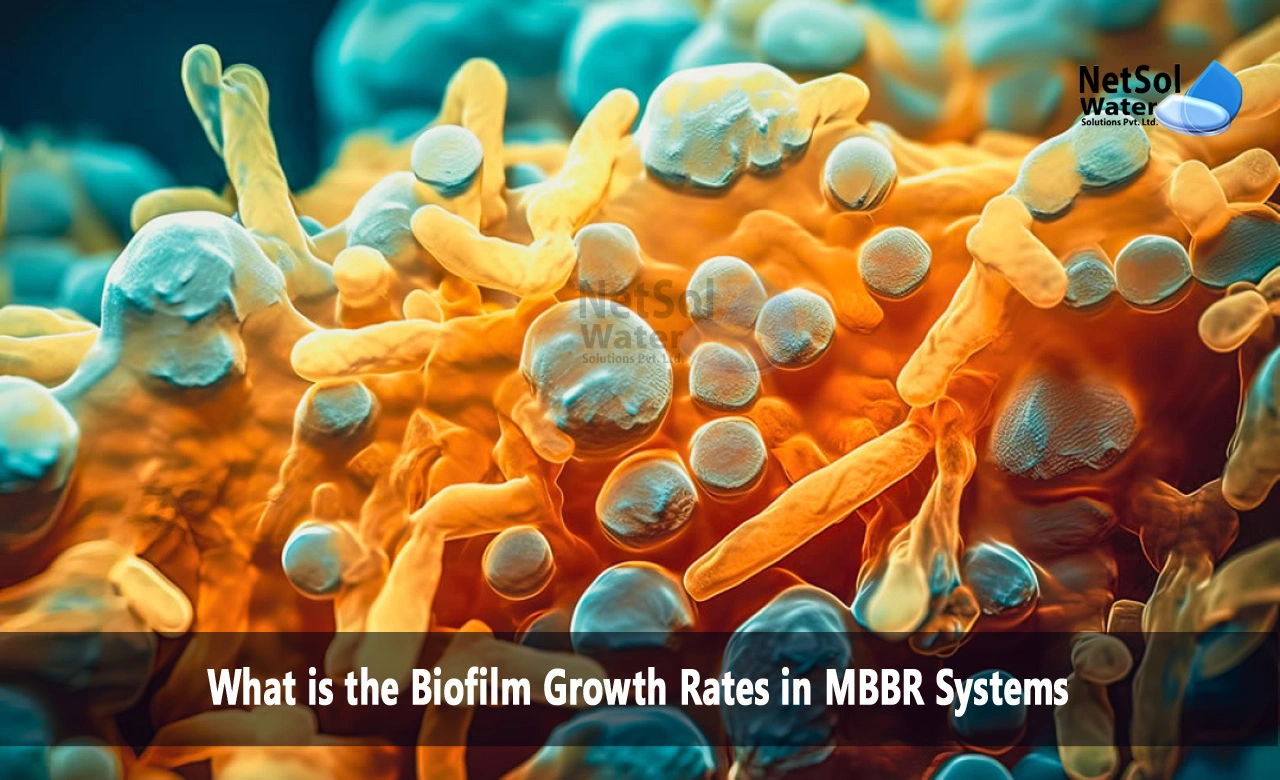What is the Biofilm Growth Rates in MBBR Systems?
Moving bed biofilm reactors (MBBRs) are an increasingly popular wastewater treatment technology that utilize biofilm grown on small plastic carrier elements. The growth rate of the biofilm is a key design and operating parameter impacting treatment performance. This blog examines biofilm growth rates and influencing factors in MBBR systems.
Biofilm Formation
Biofilm formation occurs when microorganisms attach to surfaces and embed themselves in a matrix of extracellular polymeric substances. In MBBRs, the biofilm grows on the surface of plastic carrier elements that tumble through the wastewater. Biofilm formation progresses through four main stages: initial cellular attachment, multiplication and early biofilm formation, maturation phase with increasing thickness, and steady-state equilibrium between growth and detachment. The time required to reach a mature, steady-state biofilm depends on operational conditions in the reactor. Startup can take from a few days to several weeks.
Factors Influencing Biofilm Growth Rates
The rate of biofilm growth in MBBRs is influenced by various process parameters including:
1- Substrate Supply - Higher substrate concentrations promote faster biofilm growth as it relies on organic and inorganic substrates in the wastewater.
2- Microbial Composition - The makeup of microbial species impacts growth rates since slow-growing methanogens can limit biofilm growth.
3- Temperature - Biofilm growth increases with higher temperatures up to an optimum. Temperature affects reaction rates and microbial activity.
4- Dissolved Oxygen - In most MBBRs, oxygen levels affect the rate of organic utilization by the biofilm as they are aerobic processes.
5- pH/Alkalinity - Optimal pH around 7-8 promotes faster biofilm growth, while extremes can inhibit microbial activity.
6- Carrier Surface Area - More protected surface area for attachment increases potential biofilm growth
7- Shear Stress - Excessive shear can cause detachment and limit biofilm accumulation.
Typical Biofilm Growth Rates
Studies have examined MBBR biofilm growth rates under different conditions. Reported growth rates vary but generally fall within ranges of 0.5 to 2 kg/m3 of carrier/day for organic loading rate. Growth rates up to 40 μm thickness per day were reported initially, decreasing to 10-20 μm/day at maturity. The active layer is approximately 100 μm since inner layers become diffusion limited. Biofilm density is around 10,000 to 50,000 mg/L, increasing with depth and age. Surface area coverage approaches 90% on carriers at steady state, with edges and corners tending to remain exposed. Biomass concentration grows to around 15-20 g/L of carrier, depending on organic loading rate.
Implications for Design and Operation
Information on biofilm growth rates is useful for design and operation, including sizing reactor volume, estimating treatment capacity, assessing organic loading limits, diagnosing problems, and managing carriers. For example, startup time should account for days to reach mature biofilm. Carriers may need replacement based on coating deterioration or excessive fouling. Managing biofilm growth remains an active area of research for optimizing MBBR systems.
Conclusion
Biofilm growth rate is a key parameter affecting MBBR performance. Process conditions including substrate supply, temperature, dissolved oxygen, pH, surface area, and shear stress influence the rate of biofilm formation and growth. Characterizing growth rates under different operating regimes provides insights for optimal MBBR design and operation.
Do you need an advice or assistance on selecting the best water and wastewater treatment unit? We have solutions for all your problems!
Let us know your problem, our experts will make sure that it goes away.
For an assistance or related query,
Call on +91-965-060-8473 Or write us at enquiry@netsolwater.com



